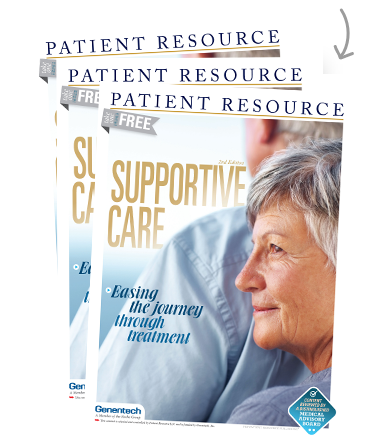Thrombocytopenia
Various treatments can interfere with the body’s ability to make platelets. The result is thrombocytopenia, and it can lead to bleeding and clotting problems.
When does thrombocytopenia typically occur?
Thrombocytopenia typically occurs within about a week following the beginning of treatment. It often corrects itself, which means platelets return to an appropriate level, after the conclusion of treatment.
How you can help manage thrombocytopenia
Help lower your risk of thrombocytopenia by doing the following:
- Be gentle when you blow your nose, and use a room humidifier to prevent nosebleeds.
- Choose an electric shaver instead of a razor to avoid cuts.
- Be especially careful when handling sharp objects, such as scissors or knives, to avoid cutting yourself.
- Avoiding flossing, using an extra-soft toothbrush, and eating soft foods to protect your mouth and gums.
- Wearing loose-fitting clothing to avoid skin irritation.
- Avoiding high-contact activities to protect against bruising.
- Avoiding alcohol and aspirin (which can slow the production of platelets and thin your blood) without your health care provider’s permission.
When to call your health care provider
Call your health care provider if you experience any of the following:
- Unexplained bruising
- Bleeding that doesn’t stop by itself
- Tiny red spots on your skin
- Nosebleeds, bleeding from your gums and/or blood in your urine or stool
- Vomiting blood or something that looks like coffee grounds
- In women, heavier menstrual periods or bleeding when it is not your period
- Severe headaches and/or vision changes
If you have a serious injury or unexpected bleeding, go to the nearest emergency room and tell them you are receiving cancer treatment and may have a low platelet count.



